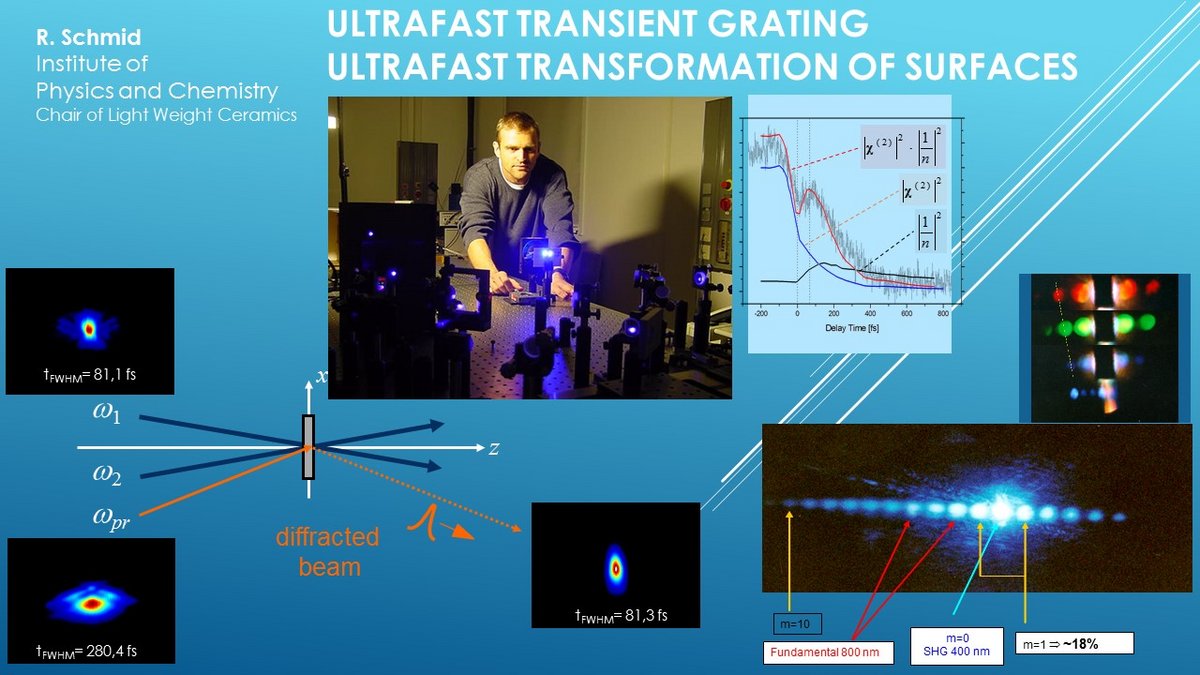completed projects

Ultra-fast switching with light - pulse cutting and pulse reshaping
Transient gratings are known as extremely powerful optical measurement techniques that can be used to test the dynamic response of a perturbed sample. In recent years, new results have been published demonstrating the significance of transient gratings in the field of ultrafast phenomena (A. Zewail - Nobel Prize 1999).
In our group, we were able to demonstrate the formation of a transient refractive index grating in barium fluoride, which can be used as an ultrafast optical switch. A concept for a very fast all-optical demultiplexer for telecommunications was presented.
Detailed investigations of the diffraction properties of the transient refractive index grating have shown that almost independently of the form of the original pulses, the diffracted pulses have a Gaussian structure in both the time and frequency domains. This effect can also be called pulse reshaping.
In addition, it is possible to impose a temporal structure on an independent third pulse. In principle, this ultra-fast amplitude modulation offers the possibility of marking optical signals in highly repetitive systems, e.g. as a cryptographic method in high-speed communication systems.
Efficient third-harmonic generation and ultra-fast computing with light
The transient grating leads to an efficient generation of the third harmonic (THG). Based on this effect, "optical computing on the femtosecond time scale" could be demonstrated.
These projects were carried out in collaboration with the former Chair of Experimental Physics II / Materials Science (Prof. Jürgen Reif).
Ultrashort laser pulses can be used to explore dynamic processes on very short time scales.
Experiments with intense ultrashort laser pulses have shown that silicon, gallium arsenide and other semiconductors respond with a change in their surface symmetry and/or charge distribution at the surface within a few 100 fs.
Surface second harmonic generation (SSHG) measurements have proven to be suitable experiments to study this transformation.They are highly surface sensitive and allow surface symmetry and its changes to be resolved very well. A change shows up in such measurements as a drop in the surface SHG. Generally, the intensity change of the SH signal is understood as a transition from an ordered crystalline state to a disordered liquid-like metallic state of the semiconductor. Some measurements indicate that at least two subprocesses can be formulated. The first is characterised by a strong electronic excitation and the second by the change in surface symmetry.
Our work on "Direct Observation of the Refractive Index Change in Surface Second-Harmonic Pump-Probe Experiments" shows that in the case of silicon, in the first hundred femtoseconds (<150 fs) after laser excitation, the rapid change in SHG is mainly determined by the change in linear (refractive index) and nonlinear properties and not by the loss of structural symmetry.
